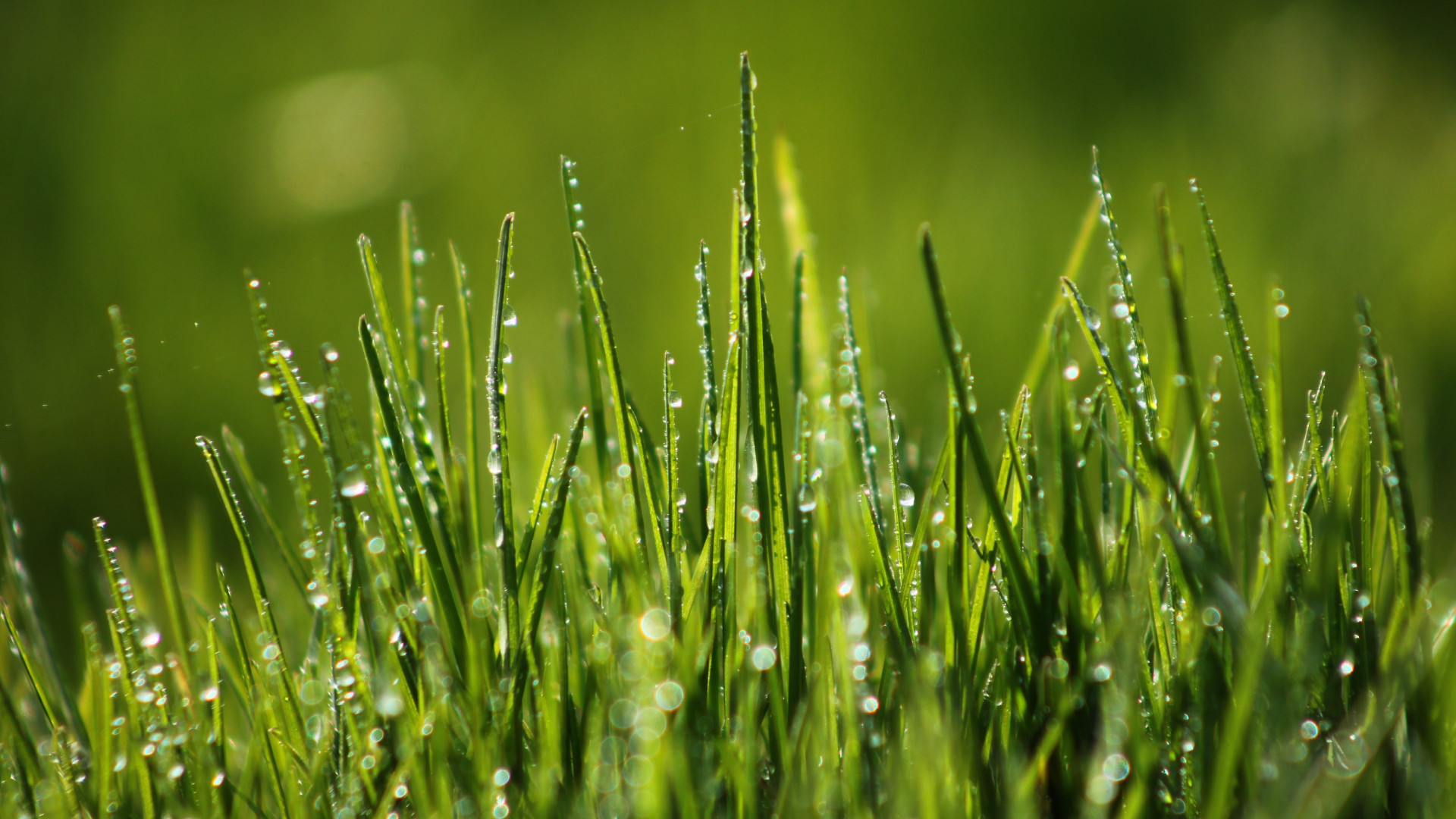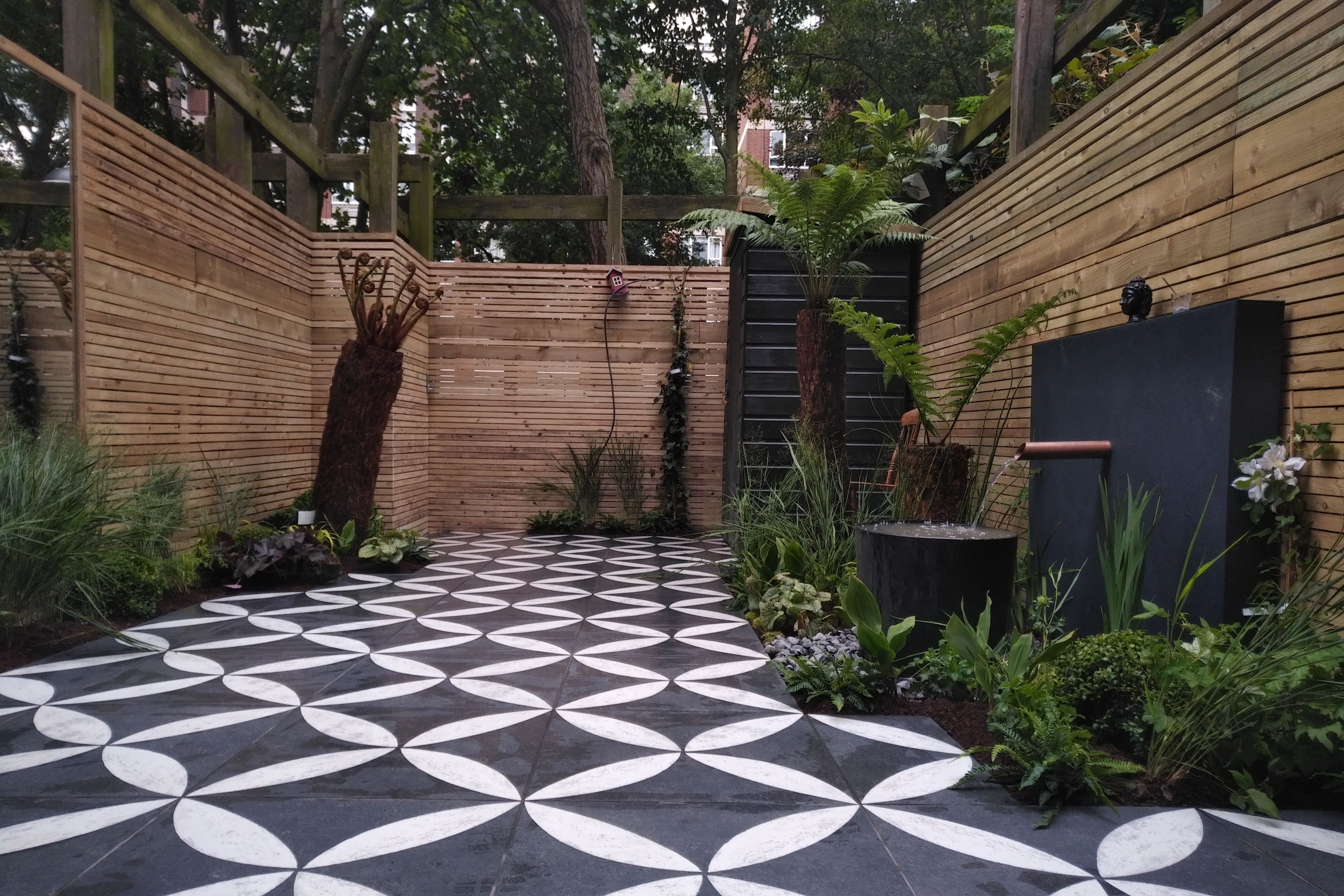Cat Landscape - Erik Koffmar: Blog
Erik Koffmar: Blog.
I am a houseplant and gardening enthusiast with an equally enthusiastic cat, so I grow wheatgrass for her to save my plants!
Fresh wheatgrass keeps Lucy out of my potted plants! Suzanne Bennett
Wheatgrass Is Healthy for Cats and Cheap to Grow
My cat, Lucy, loves fresh greenery, and she has made short work of a good many plants. When Lucy goes after a plant, she tears up the leaves, knocks it over, pulls all the soil out of the pot, and strews it far and wide. For this reason, I've had to set up all my plants in areas where they can be behind a closed door when I'm not there to supervise. Even so, occasionally Lucy gets shut in with the plants and mayhem ensues.
I wanted to give her an alternative, so I looked into grass-growing kits for cats and found that they are outrageously expensive. For $10 or more, you get a small plastic tray and a handful of seed. The cat enjoys it for a few days and then it's gone. Then one day, when I was doing research for an article on growing sprouts, I hit upon the idea of growing wheatgrass for Lucy. You probably already have almost everything you need for this project. Here's what I figured out.
The only thing you have to buy specially is the big bag of wheat grass seed. Suzanne Bennett
Reuse Veggie Packaging to Make Your Wheatgrass Trays
Supplies
Growing wheatgrass is an excellent way to reuse the little tubs that are used as mushroom packaging. You'll need two.
Styrofoam veggie trays* make good drainage trays after watering. Use the kind that veggies come in, not meat. Styrofoam trays that have held meat may harbor dangerous bacteria. *Update, November 2021: Actually, I have found that the Styrofoam tray is unnecessary. I just allow the water to run through the holes in the bottom of the inner tub before placing it in the outer tub. Doing this encourages the roots to grow in a way that holds the grass in place so kitty can't pull the whole thing out of the tub!
A single, half-size paper towel, cut in half makes your growing medium. No messy soil.
A piece of plastic wrap(or a clear plastic bag) keeps moisture in for the first couple of days.
You'll also need scissors and some sort of sharp implement to make holes in one of the mushroom tubs.
I use the tip of a heated awl to poke four holes in the corners of the inner tub. 1 / 2
1. Make Drainage Holes in One of the Mushroom Tubs
You'll need one mushroom tub to plant your seed. Begin by poking holes in the bottom of the tub to allow excess water to drain out. I use a heated awl for this purpose because I have found that using a cold implement just tears up the container. They are a little bit fragile.
Be careful using a heated implement. Make sure it has a handle that will protect you against accidental burns. Set it on a hard, non-flammable surface (like the top of your stove or in your kitchen sink) to cool off completely before putting it away.
Once you've made your drainage holes, cut your half-sized paper towel in half and line the bottom of the tub with one half.
Sow a handful of wheat grass seed on the paper towel. 1 / 3
2. Prepare Your Growing Medium and Sow Your Seed
Sprinkle a handful of seed over the piece of paper towel to result in a single layer of seed completely covering the towel. Put the other half towel over the seed and press it down.
Gently run water from the tap over the seed. I usually let it half fill the tub and then just set it in the sink to allow the excess to run out. Don't tip the tub to hurry the drainage because this will displace the seed. You want to keep it in a single layer.
Water generously and gently. Allow water to drain out gradually. 1 / 2
3. Water the Seed, Cover With Plastic Wrap, and Set Aside to Germinate
Once most of the excess water has drained out of the tub, set it on your Styrofoam tray to prevent dripping.
Cover the tub lightly with plastic wrap, or place tub and all into a clear plastic bag, to hold moisture in.
Put the tub in a warm area with bright, indirect sunlight to germinate. Run water over the seed and allow it to drain every day. You should see sprouts within a day or two.
Days 1 and 2 Day #1: You can barely see the sprouted seeds through the paper towel. 1 / 2
4. Water Daily and Give Your Sprouts Some Head Room
Every day, take the tub to the sink and run fresh water through the seeds/sprouts. This provides them with the water they need and washes away any fungus that may try to grow.
On the first day, you'll be able to see that the seeds have just started to sprout. On the second day, you'll see green. This means you can remove the top towel so the grass can start to grow upward.
Leave the plastic in place for another day or two.
Days 3 and 4 Day #3: Remove the plastic and continue watering daily. 1 / 2
5. When It Looks Like Grass, Remove the Plastic
Once green grass starts to grow, remove the plastic so that it can get tall. You'll want to let it grow for another two or three days before you give it to your cat. If you want, you can move the tub to an area that gets some direct sunlight. This will encourage it to grow a little faster and produce more chlorophyll.
Continue to wash water through the container every day to water the grass and prevent fungal growth.
Day 5 and 6 Day #5: This grass is just about ready, but I want it a little taller. 1 / 2
6. Now It's Ready to Meet Kitty
Your grass should be tall enough to give to your cat on the fifth day, but I like to give it another day to get a little taller. Before I present it to my cat, I set the planting tub into the second tub (the one without drainage holes). This prevents leaks and protects the roots, which grow out through the holes.
Lucy comes running when a fresh batch of wheat grass is ready. Suzanne Bennett
Start a Fresh Batch Right Away
I like to keep two batches of wheat grass growing at once. It's a good idea to start the second one three days after starting the first one so that you'll always have fresh grass ready. I alternate the pots of grass every day to give them a break from Lucy and make them last longer.
I let her keep one pot to chew on during my waking hours. Before I go to bed, I take that pot away and water it. The next morning I put out the alternate pot so that the one that's been chewed on can have a rest.
Doing it this way makes each pot last about a week. When one really begins looking ragged, I just let Lucy keep it until it's destroyed. I dump the grass in my compost bin, wash out the pot and start over again.
This Grass Is Ready to Be Retired This grass is a couple of weeks old altogether. 1 / 2
This content is accurate and true to the best of the author’s knowledge and is not meant to substitute for formal and individualized advice from a qualified professional.
© 2020 justmesuzanne
justmesuzanne (author) from Texas on November 23, 2020:
My pleasure! :) Glad I could help!
JC Scull on June 23, 2020:
I am a cat person, so I appreciate this tip. Thank you for sharing.
Devika Primić from Dubrovnik, Croatia on March 26, 2020:
Great tips on how to grow wheat grass. I did grow wheat grass a few years ago for the Christmas tradition and succeeded however your tips are useful
Anya Ali from Rabwah, Pakistan on March 26, 2020:
Thank you for a very useful hub.
As almost any cat owner who lets their feline friends outside knows, cats have a strange obsession with grass. They’ll poke and prod at it, play with it, sniff it and even bite it—a lot. Cats eating grass is a pretty normal occurrence, and so is the pile of vomit you’re sure to find shortly after.
Both indoor and outdoor cats are guilty of eating grass at some point. Many pet owners worry about their cats when they see them eating grass because they know the cat will eventually get sick. While it’s natural to assume that throwing up is synonymous with danger, that isn’t the case with normal, clean grass. In reality, your cat eating grass is nothing to worry about.
If cats can eat grass, but will almost certainly get sick after doing so, then why do they continue to eat it? Veterinarians and animal experts don’t have an exact reason behind this, but they do have a few theories for why cats love to nibble on nature’s most prevalent greens.
They need vitamins
Grass has a healthy dose of folic acid—an essential vitamin cats get from their mother’s milk as a kitten. Folic acid aids the production of hemoglobin, which helps move oxygen in their bloodstream. Without enough folic acid, cats can develop health problems.
If your cat spends most or all of its time inside, you can ensure it gets enough folic acid through its daily food or through a supplement.
It might be a stomach ache
The reason cats throw up after eating grass is because they do not have the necessary stomach enzymes to properly digest veggies. Cats also run into trouble digesting some materials from animals they kill—particularly in outdoor cats. When they hunt and eat their prey, cats will devour it entirely, feathers, bones and all. Additionally, hairballs can be difficult to digest.
One theory from cat experts suggests that cats will eat grass because it will make them throw up, more effectively getting rid of that undigestible material from their stomachs. This might help them feel better!
The problem might be with the other end, too. Hairballs can be difficult for cats to pass once they venture further into the digestive system. Some vets believe grass acts as a natural laxative for cats because of its fiber content, helping them break down and pass hairballs.
Chock it up to curiosity
Finally, some experts think cats might just eat grass because they’re curious and because they like the taste. Our feline companions do a lot of strange things and eating grass might just be another one!
When eating grass becomes a problem
Healthy cats eating grass once in a while isn’t going to pose a problem for their health. However, obsessive eating might be indicative of a larger underlying health issue.
Pica, an eating disorder in which your cat will persistently consume non-digestible materials, may cause cats to eat an unhealthy amount of grass. This disorder can be a big problem for cats, so you should take it in to see a vet if you think the grass-eating is getting out of hand.
Similarly, there are a few different compulsive disorders that may cause cats to eat grass more often than normal. These disorders are usually signified by the cat chewing on a lot of different items, like clothing.
While these disorders should be addressed as soon as possible by a pet care professional, you shouldn’t jump to this conclusion immediately if you notice your cat munching on grass. Pay attention to their behavior and monitor the amount of grass they eat, as well as if they start digesting other materials.
Healthy grass, healthy cats
If your cat likes to eat grass, one big problem you could face is if the grass is treated with pesticides and other chemicals before your cat starts nibbling. These chemicals are extremely toxic to animals and can make your cat very sick, so be sure to keep them away from the grass around lawn-spraying time.
If your cat spends most of its time indoors, monitor their behavior if they do go outside to make sure they don’t eat the chemically-treated grass. For outdoor and indoor cats, you might want to consider growing an herb garden or a small planter of pet grass. This will ensure the grass your cat munches on is safe and healthy. Remember, though, not all plants are the same. Many houseplants are toxic to cats, so try to find grass specifically designed for felines.
In summation, don’t fret if your cat heads outside and nibbles on a little grass now and then. Cleaning up cat puke is never a good time for pet owners, but you can rest assured that your feline friend will be just fine, if not a little healthier than before.
Андрей Павелкопротезирование зубов металлокерамика
Erik Koffmar: Blog
 koffmar.se
koffmar.se
mushrooms.
Elephant Desktop Wallpaper (77+ Images)
 getwallpapers.com
getwallpapers.com
elephant desktop laptop awesome.
Sunset Lake Fishing Camec.ptici Flight Reflection In Water Art Hd
 www.wallpapers13.com
www.wallpapers13.com
water fishing reflection sunset flight lake camec wallpapers13 reddit.
Wallpaper Green Grass, 4k, HD Wallpaper, 8k, Field, Dew, Nature #4708
 wallpapershome.com
wallpapershome.com
grass wallpapers 4k nature 8k field dew ultra 2mb background desktop mountains step laptop backgrounds wallpapershome fhd wallpaperaccess.
Animals, Cat, Jumping, Grass Wallpapers HD / Desktop And Mobile Backgrounds
 wallup.net
wallup.net
jumping animals cat grass cats cute jump desktop wallpapers highest thedestinyformula.
Small Garden Design Cat Howard Garden Builders Anewgarden - London
 rhsblog.co.uk
rhsblog.co.uk
garden backyard tiles courtyard modern outdoor landscaping patio paving decorative anewgarden flooring tile london builders howard cat fence credit decor.
Cat In Green Grass | HD Wallpapers
 www.hdnicewallpapers.com
www.hdnicewallpapers.com
.
Cute Spring 1920x1080 Desktop Wallpapers (55+ Images)
 getwallpapers.com
getwallpapers.com
desktop spring cute wallpapers windows cats.
Tiger, Predator, Grass, Mouth, Teeth, Rage, Cat Wallpapers HD / Desktop
 wallup.net
wallup.net
tiger mouth rage grass predator teeth cat desktop backgrounds.